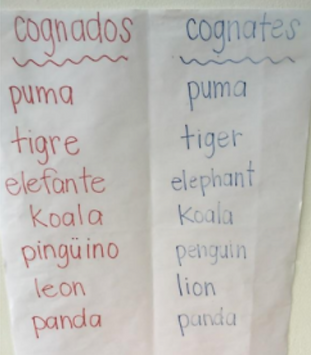Multilingual Word Walls
Students need to feel secure and comfortable in the classroom, and encouraging them to use their native language will reinforce the acquisition of English. Multilingual word walls will give students time to learn new vocabulary and show their peers their native language by teaching or reinforcing academic vocabulary. This strategy emphasizes the acquisition of English using students’ native language as a central support, positively fostering classroom languages and allowing students to connect their L1 with the L2. Teachers from all subjects can include a multilingual word wall with the new concepts or vocabulary they teach. Also, in the multilingual word walls, teachers can include cognates (words that mean the same thing in two languages and are written the same or almost the same) as their cognate walls to cover the languages spoken in the classroom or vocabulary.




A multilingual word wall is an excellent tool to begin introducing new vocabulary to English learners. First, teachers must choose an engaging informational text with background knowledge and academic vocabulary. Then, choose 5 to 8 vocabulary words for in-depth instruction. When the words are selected, students can look for definitions and create a multilingual word wall.
The Criteria to choose academic vocabulary words:
-
Words central to understanding the text.
-
Words that are frequently used in the text.
-
Words that might appear in other content areas.
-
Words with multiple meanings.
-
Words with suffixes.
-
Words with cross-language potential.
Finally, refer to the Bringing Walls strategy to continue building solid connections and put those words into practice.